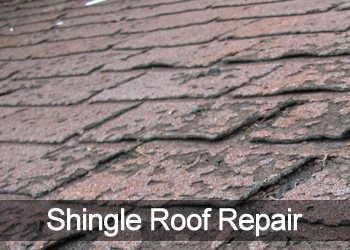How to Repair Roof Shingles
July 17th, 2023 So your roof is leaking and you are hoping that there are some easy to follow do it yourself repairs that will stop said leaking. Knowing how to repair roof shingles is helpful even for a new roof because it is not uncommon for roofs to develop leaks before the entire roof needs to be replaced. In cases such as these, a home owner with the right tools and a handyman’s intuition may well be able to repair a leak and save the cost of hiring professional roofers. Small leaks caused by localized damage such as broken or missing shingles can usually be fixed quite easily. In fact, the most difficult part of repairing roof shingles is locating the leak. One you have found the leak, single roofs tend to be the easiest to fix.
So your roof is leaking and you are hoping that there are some easy to follow do it yourself repairs that will stop said leaking. Knowing how to repair roof shingles is helpful even for a new roof because it is not uncommon for roofs to develop leaks before the entire roof needs to be replaced. In cases such as these, a home owner with the right tools and a handyman’s intuition may well be able to repair a leak and save the cost of hiring professional roofers. Small leaks caused by localized damage such as broken or missing shingles can usually be fixed quite easily. In fact, the most difficult part of repairing roof shingles is locating the leak. One you have found the leak, single roofs tend to be the easiest to fix.
Look for damage around the area of the roof that is leaking. Damaged, misshaped, curled, or missing shingles may all be the source of a leak. Search areas of your roof where two surfaces meet and make sure there are now breaks or gaps in the shingles, caulking, or flashing. Once you find the source of the leak, there are several ways you can repair it. For example, if shingles are curled up, you can reattach them with asphalt roof cement or compound caulking. If the weather is warm, you should be able to easily straighten the shingles, but in cold weather shingles become more brittle and should e softened before adjusting them. A propane torch with a flame-spreader nozzle can be carefully run over the shingle to soften it. Shingles can then be reattached by applying a generous amount of roof cement at each corner of the shingle and by pressing it firmly to the roof.
Torn, broken, or rotten shingles should be replaced. Start by lifting the edges of the old shingle and removing nails with a nail puller or pry bar. Slide the shingle free and be careful to remove any dried on roof cement. If your shingles have been blown off in a storm, you will still need to remove remaining nails. Next, you can slide the new shingle under the remaining shingles and align it according to the surrounding shingles. You will need to fasten then new shingle with galvanized roofing nails at each of the top corners of the shingle. Next, cover nail heads with roof cement and then cover the top of the shingle with the overlapping, original shingles. You can use a bit more roof cement to attach the old shingles to the new one.
Remember that when you are doing roof repairs, you should only work on a sunny day when the roof is completely dry. Always follow standard safety instructions and use a harness when you are on the roof. Finally, rubber-soled shoes provide excellent traction and are the safest footwear when you are working on a roof.




